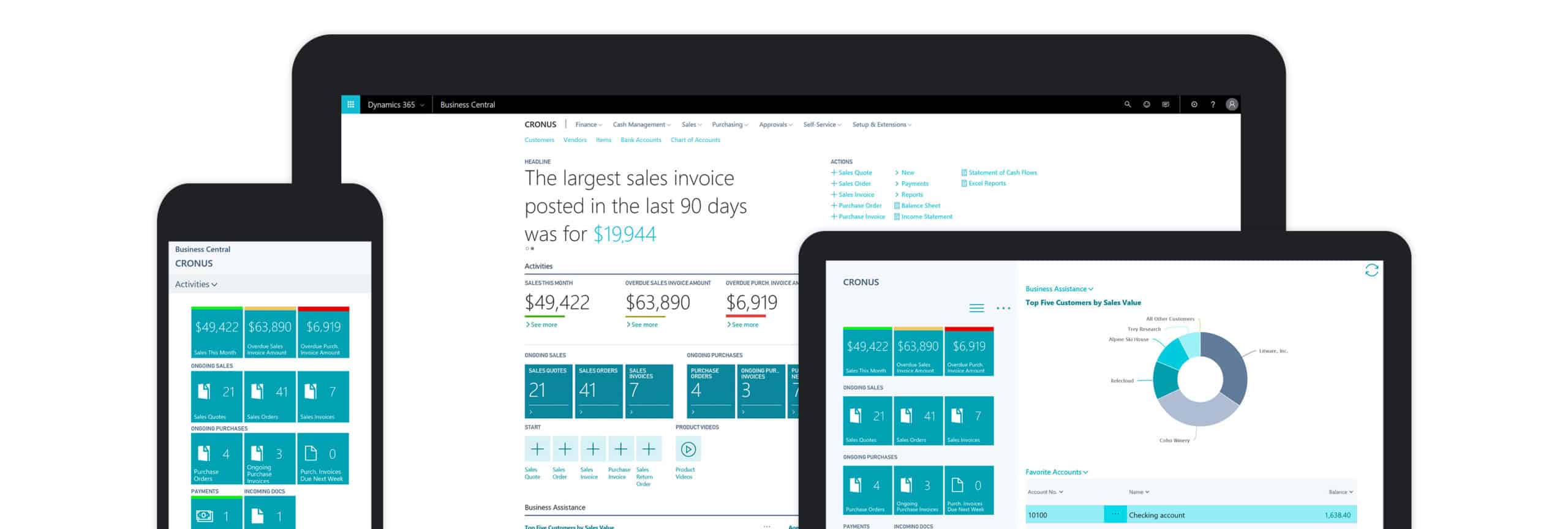Update: See Microsoft Dynamics 365 Business Central for the latest information.
In October I attended Directions EMEA in Prague—a conference dedicated to Dynamics NAV and attended by 1,600 people from NAV Partners around the world.
The hot topic of the conference was Dynamics 365 and what it means for Dynamics NAV partners and customers. There’s been a lot of confusion and rumours in the marketplace about Dynamics 365 so I thought I’d write a post to explain it.
There’s been a lot of confusion in the marketplace about Dynamics 365, this post explains what it’s all about.
There are three products in the current Dynamics range that have been used to create Dynamics 365:
-
- NAV: ERP software targeted at small and medium enterprises (3-250 employees)
- AX: ERP software targeted at large enterprises (>250 employees)
- CRM: for sales, marketing, and service functionality
Dynamics 365 is essentially these three applications, hosted by Microsoft in their Azure cloud service, integrated with their other cloud offerings such as O365 and Power BI. Dynamics 365 is purchased on a subscription basis from partners such as Fenwick Software.
Dynamics 365 delivers CRM through five individual apps—Sales, Customer Service, Field Service, Project Service Automation, and Marketing. AX becomes known as “Financials and Operations”, and a cut down version of NAV is available as Financials.
Dynamics 365 is available in two editions: Enterprise and Business.
- Enterprise Edition is Dynamics AX with the five CRM apps available, it is more expensive than Business, is targeted at enterprises with more than 250 employees, and has a restriction of a minimum of twenty user licenses. So Enterprise is AX and CRM rebranded and integrated, the names AX and CRM will no longer be used. You can use the CRM functionality only, or both CRM and Operations. There will be the ability to deploy enterprise on premise if required.
- Business Edition consists of the Financials, Sales, Customer Service, and Marketing apps. It is essentially a cut down and simplified version of NAV integrated with the three CRM apps, only available in the cloud. You can use financials only and purchase the CRM apps if required. Financials is the same software as NAV 2017, however NAV 2017 has been designed in a way that allows it to be deployed rebranded as Dynamics 365 and have functionality removed from the interface. Advanced functionality such as Manufacturing, Warehousing and Service Management is not available.
Dynamics 365 for Financials cannot be customised to specific requirements, however there will be AppSource, a store to purchase add-on modules developed by the partner network to extend the standard functionality. These Apps can also be deployed in NAV 2017 to extend its functionality without customisation.
This is good news for NAV partners and customers, as NAV will continue as we know it, will be available to deploy in the cloud or on premise with full customisability with the new option of Apps. And now we have a new product based on NAV, priced and targeted at a different market. Dynamics 365 for Financials will have the excellent financial functionality and interface of NAV and will compete at the lower end of the market with products like Xero, Netsuite and MYOB. It will enable companies to implement rapidly with minimal services and, as they grow and require more advanced functionality and customisation, they can graduate to NAV.
So in summary:
- Dynamics 365 for Financials is a cut down, simplified version of NAV only available in the Cloud that cannot be customised
- Dynamics NAV will continue to co-exist with Dynamics 365
- Apps will be available to extend functionality
- Dynamics 365 for Financials and Operations is the product formerly known as Dynamics AX
- Dynamics 365 for Sales, Customer Service, Field Service, Project Service Automation, and Marketing are the products formerly known as Dynamics CRM







